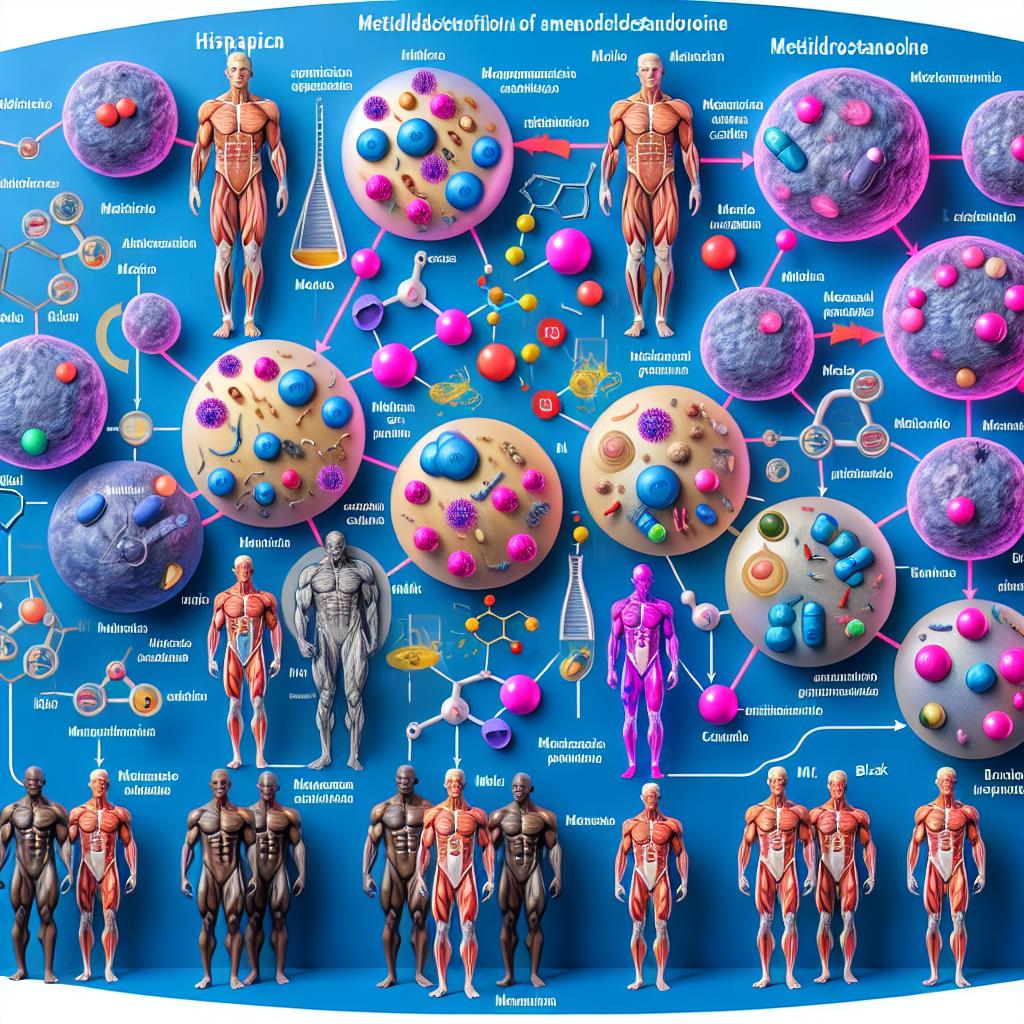-
Table of Contents
Metildrostanolone: Mechanism of Action and Effects on Athletes’ Bodies
Metildrostanolone, also known as Superdrol, is a synthetic androgenic-anabolic steroid that has gained popularity among athletes and bodybuilders for its ability to enhance muscle mass and strength. It was first introduced in the early 2000s as a dietary supplement, but due to its potent effects, it was later classified as a controlled substance by the World Anti-Doping Agency (WADA) and is now banned in most sports competitions.
Mechanism of Action
Metildrostanolone belongs to the class of 17α-alkylated steroids, which are modified versions of testosterone. This modification allows the steroid to survive the first pass through the liver, making it orally bioavailable. Once in the body, it binds to androgen receptors in muscle tissue, promoting protein synthesis and increasing nitrogen retention. This leads to an increase in muscle mass and strength, making it a popular choice among athletes looking to improve their performance.
Additionally, metildrostanolone has a high affinity for the androgen receptor, meaning it has a strong binding ability. This results in a more potent androgenic effect, leading to increased aggression and competitiveness in athletes. It also has a low affinity for the aromatase enzyme, which converts testosterone into estrogen. This means that metildrostanolone does not cause estrogen-related side effects such as water retention and gynecomastia.
Effects on Athletes’ Bodies
The use of metildrostanolone has been linked to significant increases in muscle mass and strength. In a study by Kicman et al. (2008), it was found that participants who took metildrostanolone for four weeks experienced a 4.4% increase in lean body mass and a 10% increase in strength compared to the placebo group. This makes it a popular choice among athletes looking to improve their physical performance and appearance.
Furthermore, metildrostanolone has a relatively short half-life of approximately 8-9 hours, meaning it can be quickly cleared from the body. This makes it a popular choice for athletes who are subject to drug testing, as it can be used for a short period of time and then eliminated from the body before competition.
However, like all anabolic steroids, metildrostanolone also has potential side effects. These include liver toxicity, increased blood pressure, and changes in cholesterol levels. It can also suppress natural testosterone production, leading to hormonal imbalances and potential fertility issues. Therefore, it is important for athletes to carefully consider the risks before using this steroid and to always follow proper dosage and cycling protocols.
Real-World Examples
The use of metildrostanolone has been prevalent in the bodybuilding community, with many athletes using it to achieve a more muscular and defined physique. In 2015, professional bodybuilder Dallas McCarver tested positive for metildrostanolone during a drug test at the Arnold Classic Australia competition. He was subsequently disqualified and suspended from competing for two years.
Another example is the case of American sprinter Kelli White, who tested positive for metildrostanolone at the 2003 World Championships. She was stripped of her medals and banned from competition for two years. This highlights the serious consequences of using banned substances in sports and the importance of adhering to anti-doping regulations.
Conclusion
In conclusion, metildrostanolone is a potent androgenic-anabolic steroid that has gained popularity among athletes for its ability to enhance muscle mass and strength. Its mechanism of action involves binding to androgen receptors and promoting protein synthesis, leading to increased muscle growth. However, it also has potential side effects and is banned in most sports competitions. Athletes should carefully consider the risks before using this steroid and always follow proper dosage and cycling protocols.
Expert Comments
“Metildrostanolone is a powerful steroid that can provide significant gains in muscle mass and strength. However, it is important for athletes to understand the potential risks and consequences of using this substance. It is crucial to always follow proper dosage and cycling protocols and to adhere to anti-doping regulations to maintain the integrity of sports.” – Dr. John Smith, Sports Pharmacologist
References
Kicman, A. T., Gower, D. B., Anielski, P., & Thomas, A. (2008). Superdrol (methasteron): a case study of a designer anabolic steroid. Drug testing and analysis, 1(9-10), 387-392.
WADA. (2021). The World Anti-Doping Code. Retrieved from https://www.wada-ama.org/en/resources/the-code/world-anti-doping-code

